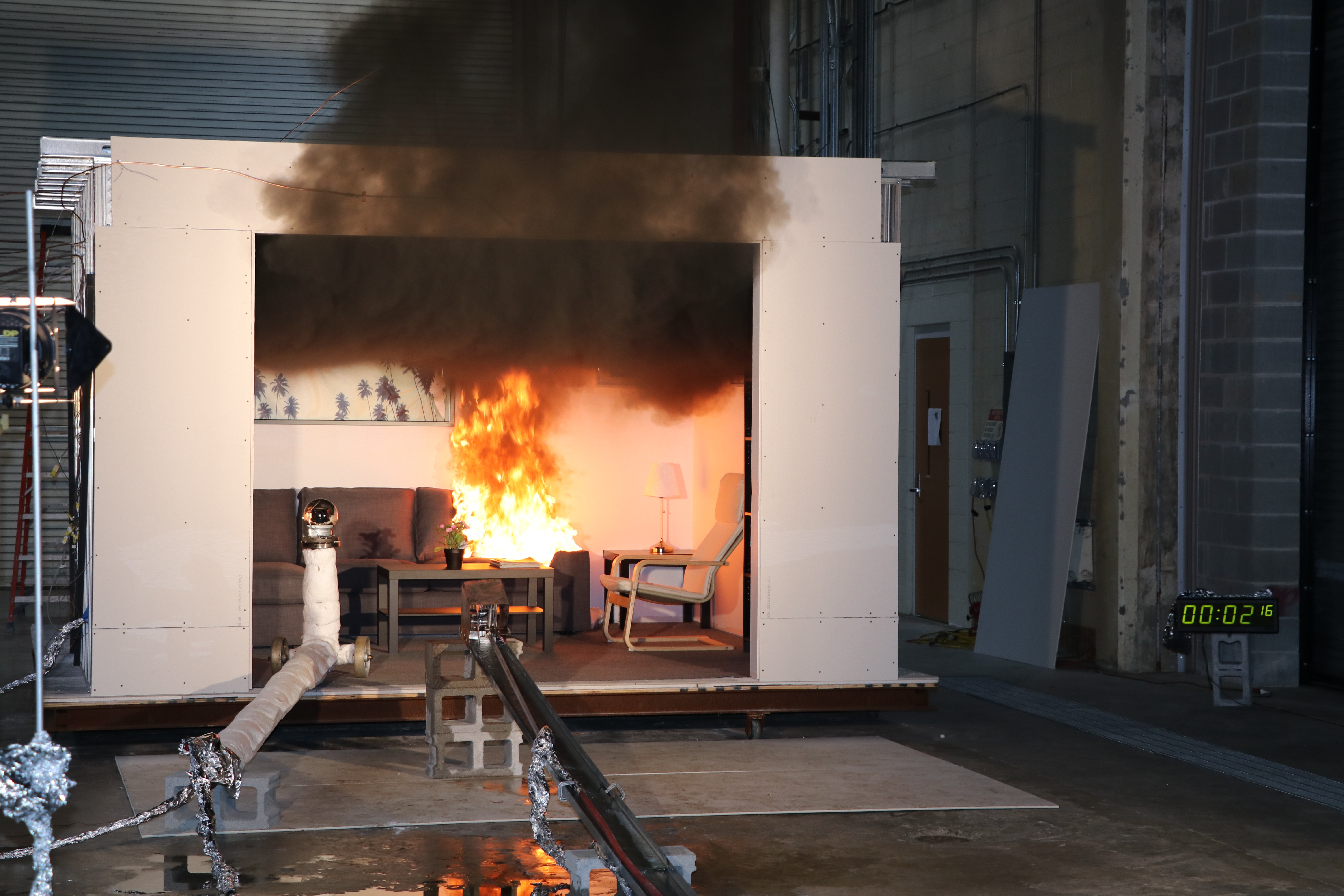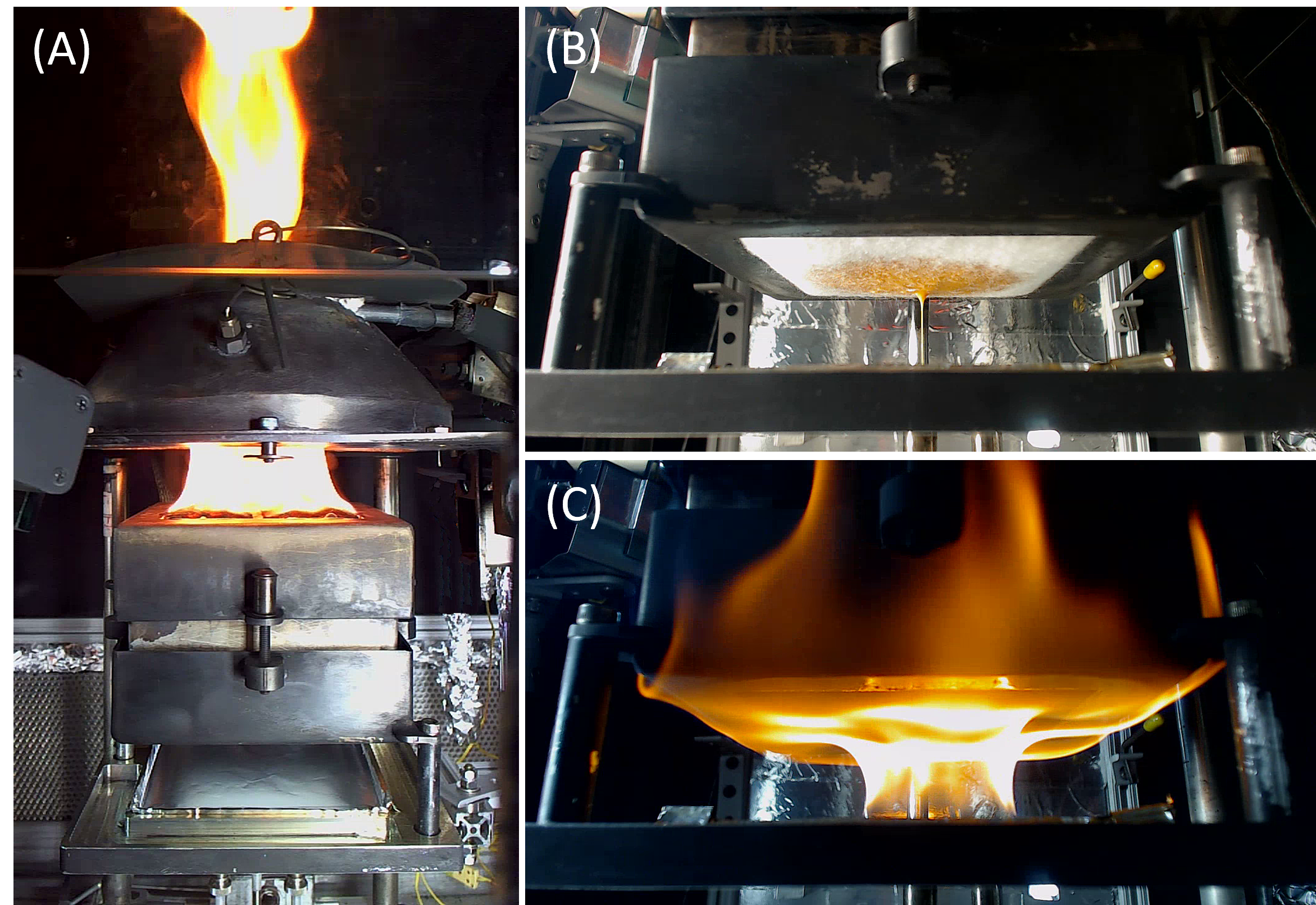Taking Measure
Just a Standard Blog

Fires that begin on upholstered furniture such as sofas are the leading cause of home fire fatalities in the United States, accounting for about 600 deaths per year. They are not as frequent as cooking fires, but they are about 14 times more likely to result in death than other home fires.
Since my days as a graduate student, I have devoted my research life to the cutting-edge science that can help reduce these fires and make our homes safer.
I grew up in Italy. One night when I was 5 years old, lightning struck the antenna atop my condo building and a fire started in the kitchen. In Italy, fire alarms were not widely in use at the time. Luckily, however, a neighbor noticed the smoke coming out from the door in the middle of the night and woke up my parents. My parents were able to extinguish the fire just before it reached the liquid propane cylinder in the kitchen. This frightening experience drew me toward fire research.
Almost two decades later, in 2003, I was a Ph.D. candidate at the University of Trieste in Italy visiting the National Institute of Standards and Technology (NIST) for the first time. What was supposed to be a few months of enriching experience as a guest scientist became a long-lasting career at NIST, which has a major program in fire safety research.
Setting Up Barriers to Fire
When I first visited NIST in 2003 as a Ph.D. student, I was investigating the use of fire retardants based on what are known as non-halogenated chemicals. In this realm, I pioneered the preparation of self-extinguishing materials, which were polymer nanocomposites containing a material called layered double hydroxides (LDHs). LDHs are a family of layered crystals whose individual layers are less than 1 nanometer thick. Inorganic hydroxides and nanocomposite materials already have excellent fire-retardant properties, and we modified the LDH surface chemically so that it also became intumescent, meaning that it swelled up when heated, further suppressing the spread of fire.
As I made the transformation from guest researcher to NIST staff member, I found other areas of professional satisfaction beyond fire research. I enjoyed working in an international and multiethnic environment. I joined and then became the president of NIST’s guest researcher association, an association promoting networking between national and foreign guest scientists at NIST.
Fast forward a few years, and I became the leader of a project aiming to reduce the flammability of upholstered furniture. The majority of deadly furniture fires start with smoldering ignition, often from cigarettes. To help prevent these fires from occurring, regulators have historically focused on tests designed to assess and improve the ability of upholstered residential furniture to resist ignition from cigarettes. NIST has had a leading role in developing smoldering tests since the 1970s, beginning with the pioneering work of researcher J.J. Loftus, who developed miniature mock-ups of furniture to investigate smoldering in upholstered items.
Independent of ignition source, most furniture fire deaths occur because of flaming fires, often after there is a transition from smoldering to flaming. Unfortunately, there is no U.S. regulation that limits furniture flammability. This is in part due to a strong public backlash against chemical flame retardants, which have been used to reduce upholstered furniture’s flammability. Certain types of fire retardants have shown possible adverse effects on human health and the environment. As a result, several states in the U.S. have introduced regulations limiting the use of flame retardants in furniture.
To prevent furniture fires, I have been investigating a different kind of technology, known as fire-barrier fabrics. They aren’t based on chemicals or nanoparticles. Instead, as their name indicates, they are fabrics, usually intrinsically fire-resistant fibers, specifically designed to protect the flammable padding material in upholstered furniture. In the event of a fire, these fabrics decrease the rate at which the padding material will burn. The most intriguing aspect of fire barriers is that they can use physical means instead of chemicals to decrease fire hazards and meet certain fire performance requirements. They act as a thermal barrier by reducing the amount of heat reaching the padding material, and as a mass barrier by slowing down the release of flammable liquid and gaseous products produced by the padding when it reaches high temperatures.
The fire barrier approach has already been proved successful through its adoption by the mattress industry, which used fire barrier fabrics to comply with a 2007 Consumer Product Safety Commission (CPSC) flammability standard for mattresses. This standard imposed requirements for a maximum heat release rate (a measurement of the burning rate) of below 200 kilowatts for mattresses (comparable to the heat rate from a burning newspaper-filled trash bag). The performance benchmark came from NIST test methods and analysis, which concluded that reducing the heat release rate range of mattresses would lead to a measurable and significant reduction in deaths. As shown in a recent NIST publication, the introduction of the regulation led to a reduction in deaths from bed fires of about 70%. This percentage correlates with the 50% to 80% of mattresses that have been replaced and comply with the CPSC standard. This strongly suggests that the regulation was extremely effective.
NIST has carried out full-scale experiments in fully furnished rooms demonstrating the ability of fire barriers to delay fire growth, and in particular flashover, the point of no return when virtually the entire room bursts into flames at once. Delaying flashover is important because about two-thirds of fire deaths occur in fires that reach flashover. Furniture fires without barriers required less than seven minutes to reach flashover. Furniture fires with barriers burned at a low rate with a time to flashover of more than 20 minutes.
These results can be put into context by comparing the time to flashover to the total response time of first responders. Firefighters can prevent flashover from occurring and rescue potential fire victims only if they intervene before flashover occurs. The target response time of first responders according to National Fire Protection Association (NFPA) standards varies between approximately 13 and 19 minutes depending on the zone (urban, suburban or rural). Therefore, first responders can likely intervene before flashover only when fire barriers are used.
Getting Industry on Board With a New Test
The residential upholstered furniture industry has not yet adopted fire barriers in its products. For a new technology such as this one, reasonable concerns could include cost and comfort. However, mattress manufacturers have introduced high-loft nonwoven fire barrier fabrics that have been shown not to have any detrimental effects on comfort. Mattress manufacturers have also been able to reduce the cost of barriers to about $10 per mattress.
Arguably, however, the most challenging and enduring obstacle to the introduction of fire barriers in furniture might be the lack of a standard test method to assess their performance. In the past few years, I have been working to address this problem through the development of a bench-scale test based on cone calorimetry, the so-called Cube test. A typical specimen used in the Cube test contains a flammable core (such as polyurethane foam) and superficial layers (such as cover fabric and other specialized fabrics), covering the top and bottom surface of the core, that may act as fire barriers. The figure below shows pictures of a Cube test with an upholstery material combination including a fire barrier.

Preliminary testing comparing the performance of fire barriers at full scale and in the Cube test showed that the Cube test was a good simulation of a full-scale fire. Currently, the Cube test is being standardized by ASTM International.
I look forward to when fire barriers are used in residential upholstered furniture. I think they will make a difference in reducing residential home fires. I’m glad to have had the opportunity to participate in creating them, and I hope our new test method makes it easier for manufacturers to consider incorporating them into upholstered furniture. I believe this new test, and my fire research activities in general, have the potential to save lives. This is what makes my work at NIST so special and gratifying.
About the author
Related Posts
Comments
Hello Tom,
thanks for your feedback.
Hopefully, we will have soon a voluntary standard to help furniture industry moving towards less flammable products.
Might want to look at FAA regs, policy, & guidance for fire safety for aircraft.
Hello William, thank you for your comment. Yes, fire barriers have been used for decades in aircraft seat cushions and FAA regulated their flammability in 1986 with AC 25.853-1 - Flammability Requirements for Aircraft Seat Cushions. This provides further strong supporting evidence that fire barriers are effective even in very severe test conditions.
People could just buy furniture that is made from wool. It is very difficult to light wool and fire.
Hello Tina,
wool is definitely harder to ignite than most natural and synthetic fibers but generally does not provide enough protection of the padding material when larger ignition sources are present.






Mauro:
I enjoyed your article. Keep up the good work and hopefully the furniture industry will become as receptive as was the mattress industry.